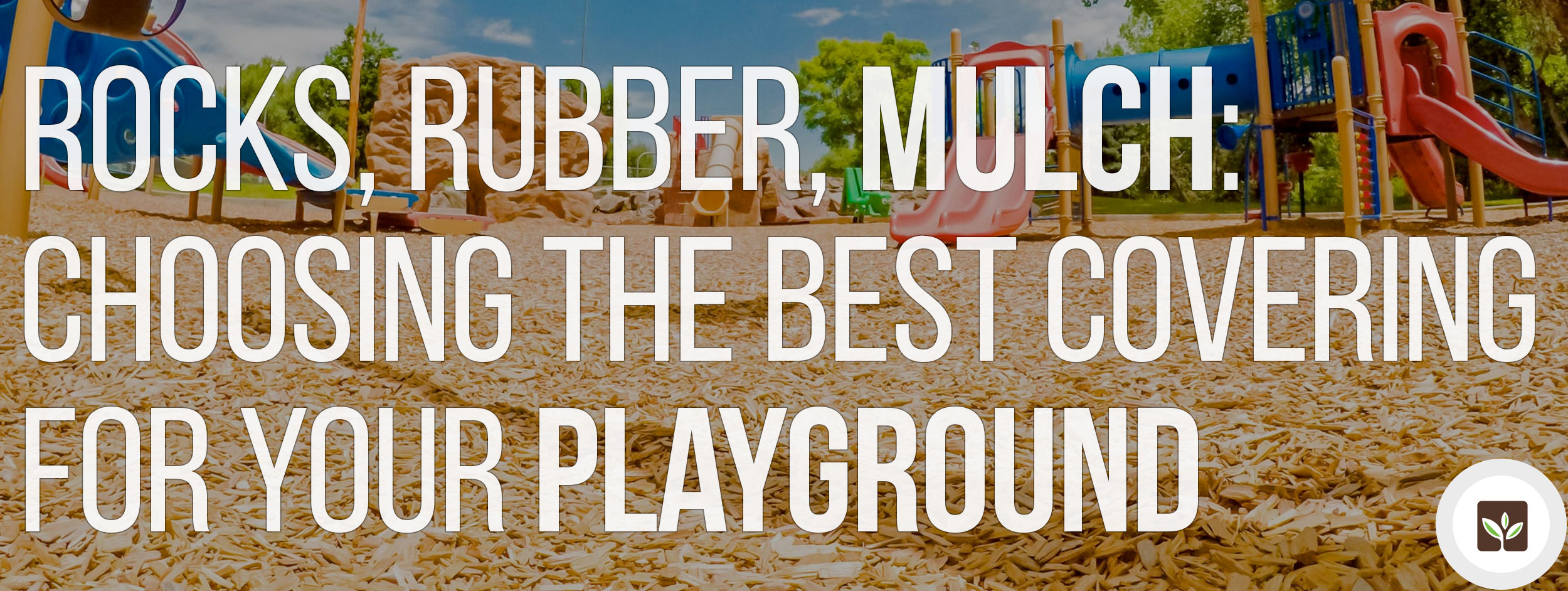
Rocks, Rubber, Mulch: Choosing the Best Covering For Your Playground
Rocks and gravel have been the traditional playground covering for decades. If you can’t recall what material covered your elementary school’s playground, perhaps your parents can remind you of the sound of feet running through the rocks while playing tag during recess. Those were the days, and thankfully they’re behind us. Well, kind of.
Although rocks are still used for landscaping projects, the two most popular options for playgrounds are rubber surfaces and wood mulch products. While rubber is often chosen for its ability to reduce injury, mulch provides a less toxic foundation for children to play on, which is why it is such a popular choice.
Taking into consideration that rocks are still an option, which covering is the best option for playgrounds?
Pros and Cons of Rocks
Rocks and gravel covered playgrounds, while not as popular as rubber and mulch, are still used as a landscape covering by day care centers, schools, parks, and other residential and business owners. Let’s unpack the pros and cons of using rocks for your playground foundation.
Pros:
- Rocks are fire resistant
- Less repetitive clean up is required as rocks are heavier than mulch and won’t be blown or trampled out of place as much as other coverings
- No need to replace rocks as they are not biodegradable and will last longer
- Rocks make it more difficult for weeds to grow through as they are starved of moisture
- The harder surface of the rocks makes it easier to clean as needed
Cons:
- Rocks hold heat when outdoor temps are high, which may cause injury when touched and cause the play area to become hotter make for a hotter
- Removing or replacing the rocks will be a time consuming and laborious process
- Falling upon the rocks, especially broken ones, will most certainly cause injuries
When the Rubber Meets the Road
Rocks can become rather expensive due to weight, delivery, and installation costs.
Rubber playground covering can be either in the form of a flat, whole surface, or installed as a rubber mulch. Either way is a popular choice for playground surfacing due to its ability to last much longer than other surfaces, while providing a safer foundation for children to play on without becoming injured.
However, many choose to avoid rubber mulch and surfaces as rubber is known for releasing toxins in extreme heat. Aside from the odor during installation, removal can be very difficult, it may fade over time, and it’s quite flammable when facing direct flame.
In terms of cost, rubber landscaping mulch and whole rubber surfaces are much more expensive than other coverings. If going with a whole surface, installation will also play a huge factor in pricing as it is more difficult to install than simply blowing mulch. The overall costs are even higher when selected a recycled, toxin-free, or odorless rubber material.
Blown Wood Mulch
Probably the most cost-effective and least time consuming surface for your residential or business playground is blown wood mulch, which can be installed at a fraction of the time and costs of rubber and rocks.
Playground mulch should be durable and able to withstand the high amount of traffic without becoming displaced. Wood chips, eucalyptus, and cypress mulches are all recommended for playgrounds due to their durability and safety. For a few dollars more, organic wood mulch will ease any concerns for toxicity.
Which is Best For Playground Landscaping?
Whatever your main concern is when it comes to selecting a mulch covering for playgrounds, when it comes to safety, cost effectiveness, and overall appearance, blown wood mulch wins hands down.
As always, blown mulch installation offered through GetMulch.com is only a few clicks away. Visit our interactive website to request a quote, or if you’ve already decided to go with a professional, let us know more about your project and we’ll connect you with a professional blown mulch installer near you.